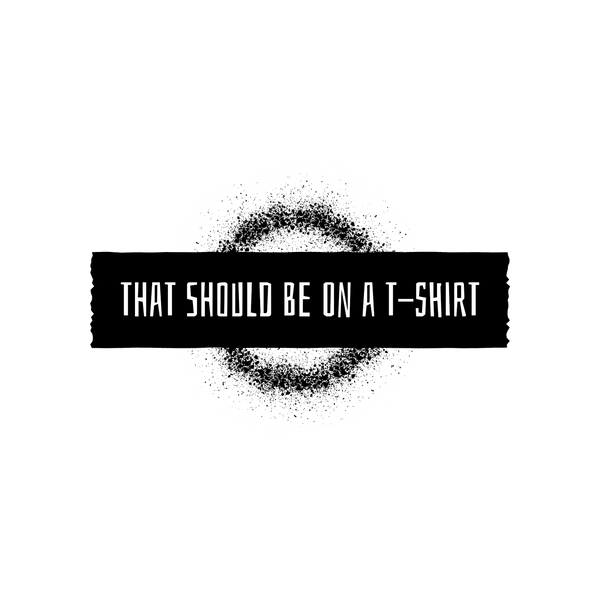From Underwear to Statement Wear: The T-Shirt's Weird & Wonderful Journey
Let’s play a game. Open your closet. Take a peek. What do you see?
A constellation of cotton, a galaxy of garments, a… well, a whole lot of t-shirts.
That shirt from a 5k you walked? Check. The one with the pun that made you snort-laugh? Absolutely. The soft, faded one you’ve had since college that’s basically a second skin? Don’t you dare throw it out.
But have you ever stopped to wonder how this humble piece of apparel became the blank canvas for our personalities, our passions, and our proclamation that “I’m Not a Morning Person”? Strap in, friends. We’re going on a time-traveling adventure.
Chapter 1: The Secret Agent Underwear Era (Early 1900s)
Our story begins not on a concert stage, but in the… gasp… underwear drawer. Yes, the original t-shirt was a secret agent. Born as a simple, lightweight undershirt for the U.S. Navy in 1913, its mission was covert ops: to keep sweaty sailors from chafing in their wooly uniforms. It was practical, it was hidden, and it had a classic, no-nonsense “T” shape. Hence, the name. Genius, right?
For decades, the t-shirt lived a quiet, undercover life. It was the supporting actor, never the star. To be seen in just your t-shirt was like being seen in just your underwear—a fashion faux pas of the highest order!
Chapter 2: The Rebel Without a Cause (The 1950s)
Then, along came Hollywood’s ultimate bad boy, Marlon Brando. In the 1955 film A Streetcar Named Desire, he strutted onto the screen in a tight, white tee that might as well have been a suit of armour. It was raw. It was rebellious. It was… sexy.
Suddenly, the t-shirt wasn’t just underwear; it was outerwear. It was a symbol of youthful rebellion, a middle finger to the stuffy formality of the past. Teenagers everywhere saw Brando and thought, “I, too, can be a moody icon from the comfort of 100% cotton.” The genie was out of the bottle.
Chapter 3: The Peace, Love, and Print Revolution (The 1960s & 70s)
If the 50s taught us to wear the tee, the 60s and 70s taught us to speak with it.
The invention of new printing techniques, like screen printing, gave the t-shirt a voice. And oh, did it have things to say! It marched for peace, it promoted flower power, and it proudly declared its love for rock bands. The t-shirt became a walking billboard for your beliefs, your musical taste, and your general state of mind.
It was no longer just clothing; it was a mobile megaphone.
Chapter 4: The Sarcasm & Superhero Boom (1980s - Today)
And then, things got fun. The t-shirt developed a sense of humour.
Enter: the slogan tee. It started with clever brand logos and evolved into the witty, sarcastic, and sometimes downright bizarre statements we know and love today. Why just wear a shirt when you can wear a shirt that says, “I’m sorry for what I said when I was hungry”?
It became a uniform for fandoms, a badge for dog moms, and a testament to dad jokes. The t-shirt could now be anything: a piece of art, a political statement, a hilarious inside joke, or a tribute to a cat who definitely owns you.
Chapter 5: The Modern Masterpiece (Right Now!)
Today, the t-shirt’s evolution is in your hands. With the rise of print-on-demand, you are the designer. That random thought you had in the shower? That should be on a t-shirt.
The journey from a hidden naval undershirt to a custom-made canvas for “Unicorn Field Manager” is nothing short of magnificent. It’s a story of comfort, rebellion, and the human need to express ourselves, one soft, pre-shrunk cotton garment at a time.
So the next time you pull on your favourite tee, give it a little nod of respect. It’s not just a shirt. It’s a historian. It’s a rebel. It’s a comedian.
And it’s the most comfortable piece of social history you’ll ever own.

